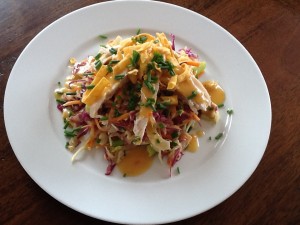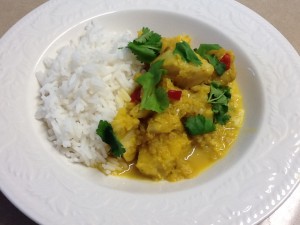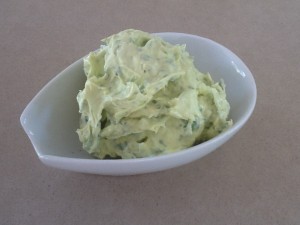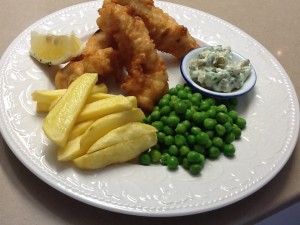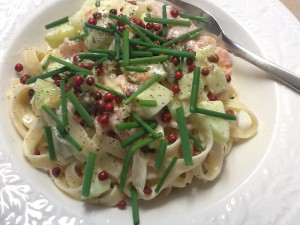While living in Chile in the 90s we had a couple of holidays in the United States. When lunching in one of those huge shopping malls with umpteen different takeaway foods to choose from, I invariably head for the salad bar.
At one of these I found a selection of salads created by Wolfgang Puck, a well-known restaurateur and cookbook writer, originally from Austria but now well-established in the USA. His Chinese Chicken Salad was delicious, so I dissected it and wrote down the ingredients. I’m a bit of a pain when travelling, always whipping out a notebook to write down food ideas! I had to guess what was in the dressing, adjusting the quantities each time I made it, until I got it right.
The internet didn’t exist back then so before writing this post I read through some of the many versions of this salad which appear online – including one on Mr Puck’s very own site. There are lots of variations!
I’ve been making my version for over 20 years and it’s delicious, so what was in the original recipe has become somewhat irrelevant. A great salad for a summer evening and if you’re in a hurry buy a cooked chicken and you’re halfway there. Go easy on the dressing for small kids as it packs quite a punch. Mr Puck uses crispy fried wonton wrappers to crumble over the salad, but corn chips or crunchy noodles – a ready-to-eat Asian snack available in Australian supermarkets – work well and are easier.
Meat from 1 whole roast chicken, cut into strips
4-5 cups finely shredded white cabbage
2 cups finely shredded red cabbage
3 carrots, cut into fine julienne
4 spring onions, finely sliced
1 cup celery, very finely sliced
A handful toasted cashew nuts, sliced (optional)
Honey Mustard Dressing (see below)
2 cups corn chips, crumbled by hand
Or ready to eat crunchy Asian noodles
chopped coriander, parsley or chives
Keep a few nice pieces of chicken breast to garnish, then mix the rest with remaining salad ingredients (except corn chips) and enough dressing to moisten. Place in one large or individual serving dishes, top with reserved chicken pieces, drizzle with a little more dressing and sprinkle corn chips or crunchy noodles over the top. A few chopped herbs, just to add a bit of green colour and it’s ready. You will have dressing left over.
Serves 4-6
Variations and Additions: add some thinly sliced snow peas (mangetout), red capsicum or beansprouts
Honey Mustard Dressing
4 Tbs Dijon Mustard
1Tbs hot English mustard
2 Tbs sweet chilli sauce
2 Tbs honey
1 cup oil
¼ cup cider vinegar
1-2 Tbs lemon or lime juice, to taste
1 Tbs soy sauce
1 Tbs grated fresh ginger
Place all the ingredients in a jar and shake vigorously to emulsify.

